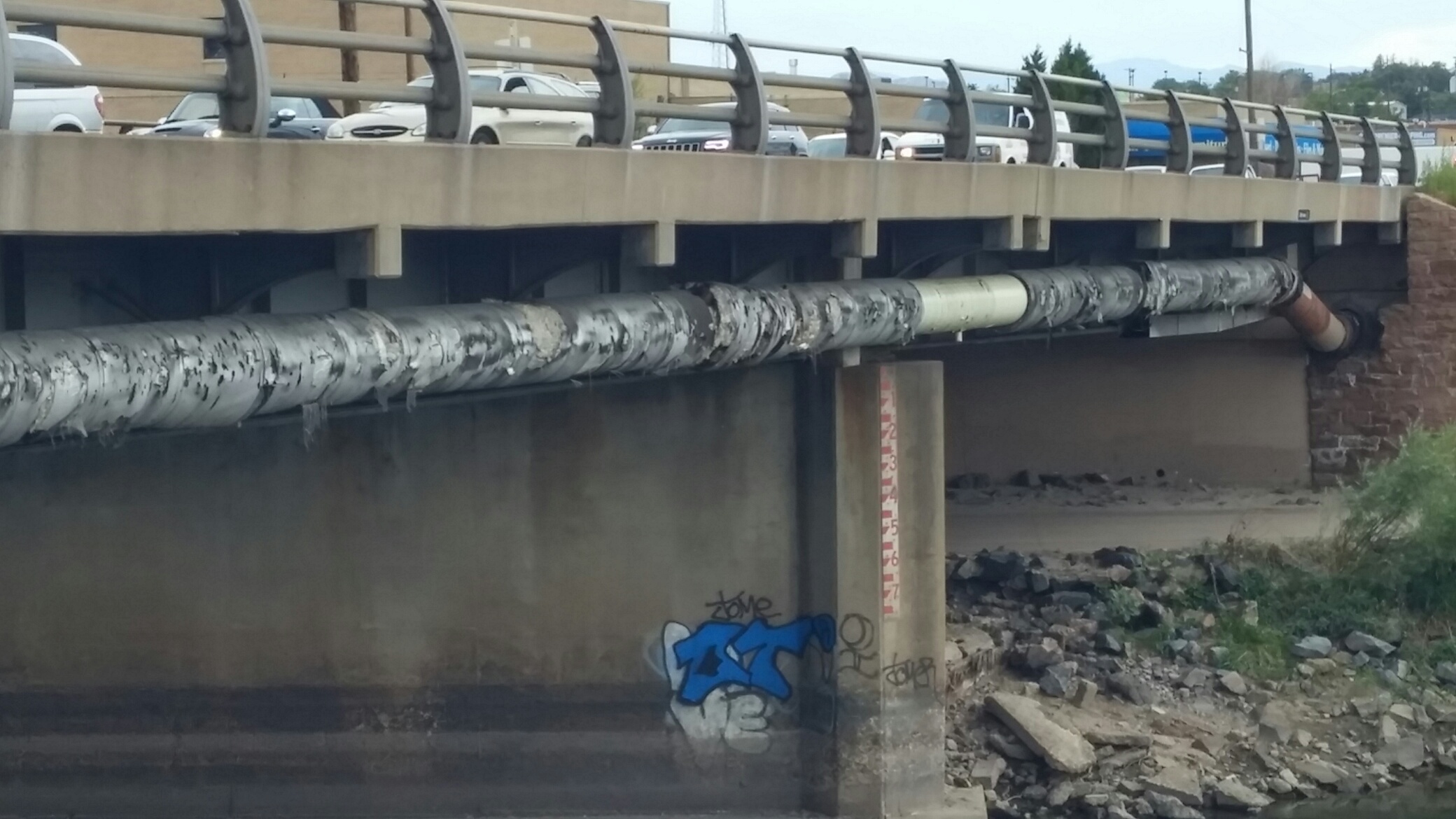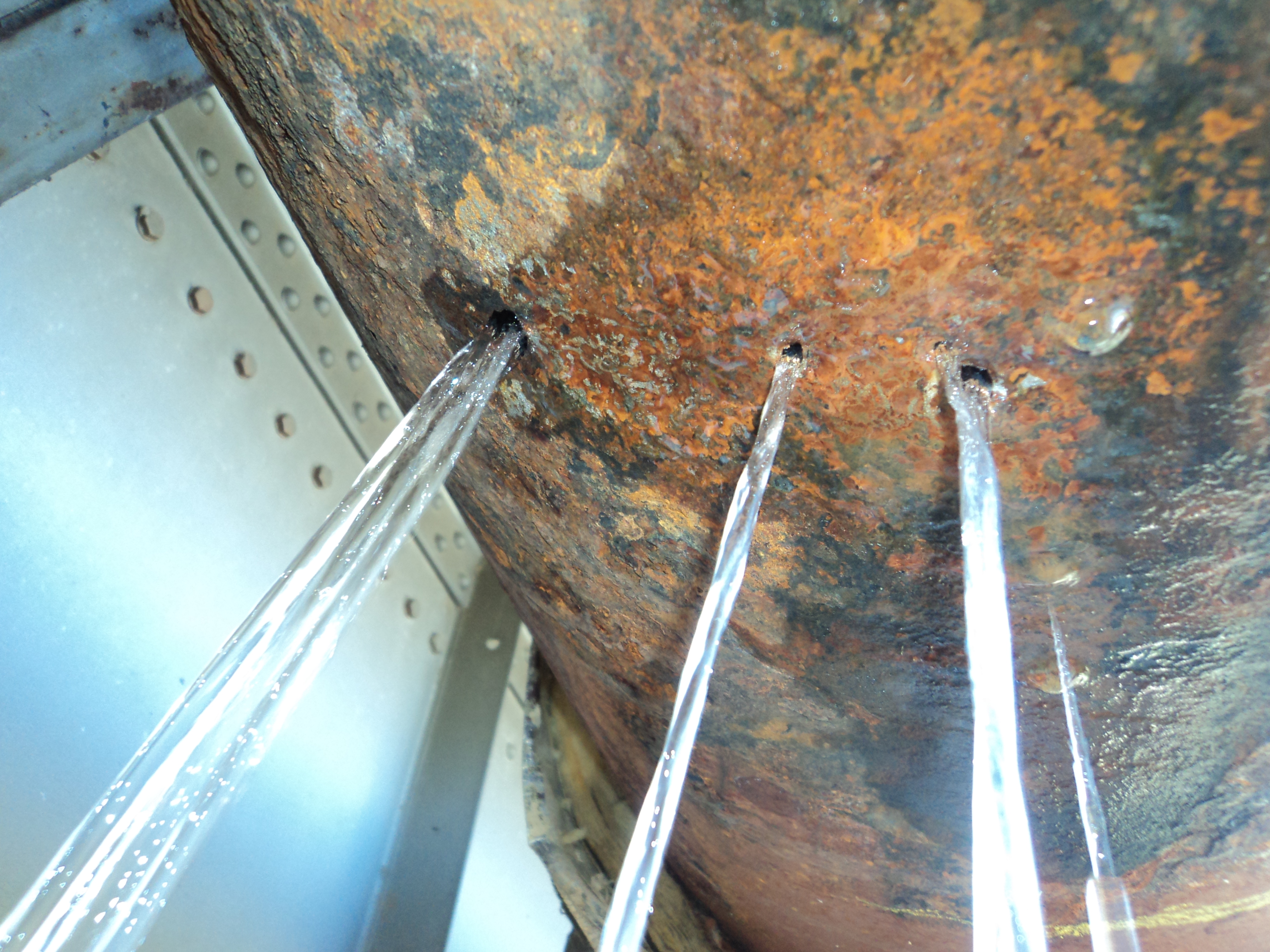
Under the river and through the woods
When the forefathers of Denver Water were installing our water distribution system in the 1890s, they ran into a problem: How can we get water to the people living on the other side of the South Platte River?
Their solution: Hang the pipe from a bridge. As technology advanced, Denver Water engineers improved on that approach, protecting the pipe with fiberglass insulation and a casing of asphalt paper (similar to the shingles on your roof) to protect it from freezing.
Fast forward to the 21st century. Those exposed pipes have seen their share of hard times, despite regular repairs and maintenance.
One pipe in particular, at West Eighth Avenue, was damaged and repaired after the 1965 South Platte River flood. But constant exposure to the elements has caused the pipe to steadily deteriorate: The asphalt casing has flaked off, causing corrosion, and several “pinhole” leaks (about the size of a finger) have recently appeared.
Our new solution: Thanks to advances in horizontal directional drilling technology, Denver Water can now make the formerly impossible task possible. We’re burying the pipe underneath the river.
“Exposed water mains aren’t ideal — their life expectancy is only 50 to 75 percent that of a buried main,” said Laura Dennis, Denver Water design engineer for the project. “Moving the pipe under the river was a great solution to protect it from the elements and extend its lifespan.”
To relocate the pipe, a specialized drilling crew tunneled beneath the river with a drill similar to those used in oil and gas drilling, injecting a mud-and-water mixture into the ground to help break it up as they moved along. In less than a week, they completed the hole.
Next, crews on the west side of the river fused together 650 feet of pipe lined up along the south side of West Barberry Place, then fed it through a 6-foot trench to connect the east and west sides of the river, connecting the water distribution system from Zuni Street to West Barberry Place.
And what about the old pipe? It’s still there, but we’ll get rid of it when the City of Denver completes its Eighth Avenue bridge replacement project in the next five or six years.
Denver Water’s field crew will head out to connect the new pipeline to the system this fall so it will be up and running by the end of the year. Dennis said the project serves as a model to repair and replace 30 other similarly exposed mains around the city. “This is a great way for us to increase the longevity of our infrastructure,” she said.
For a closer look at photos from the project, check out this short video:


